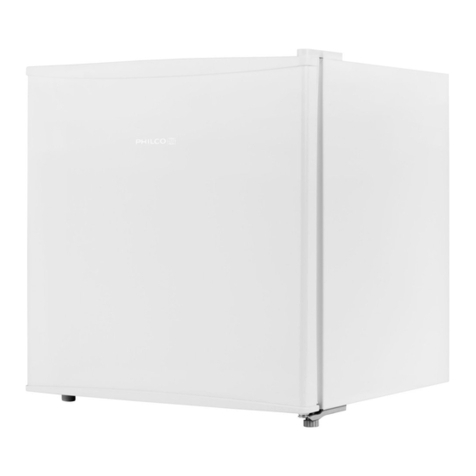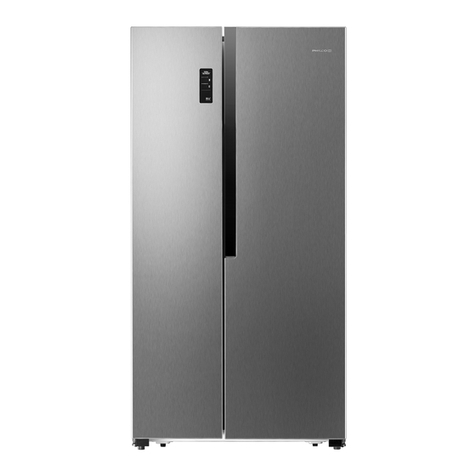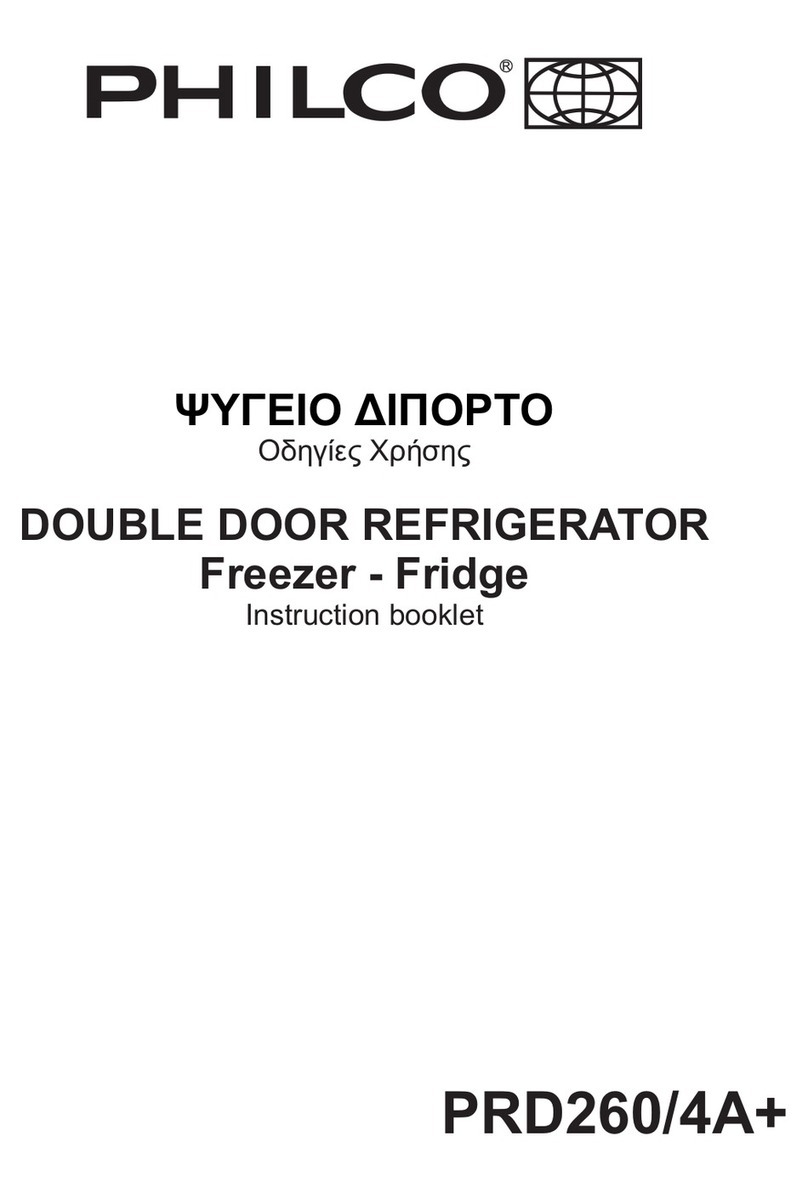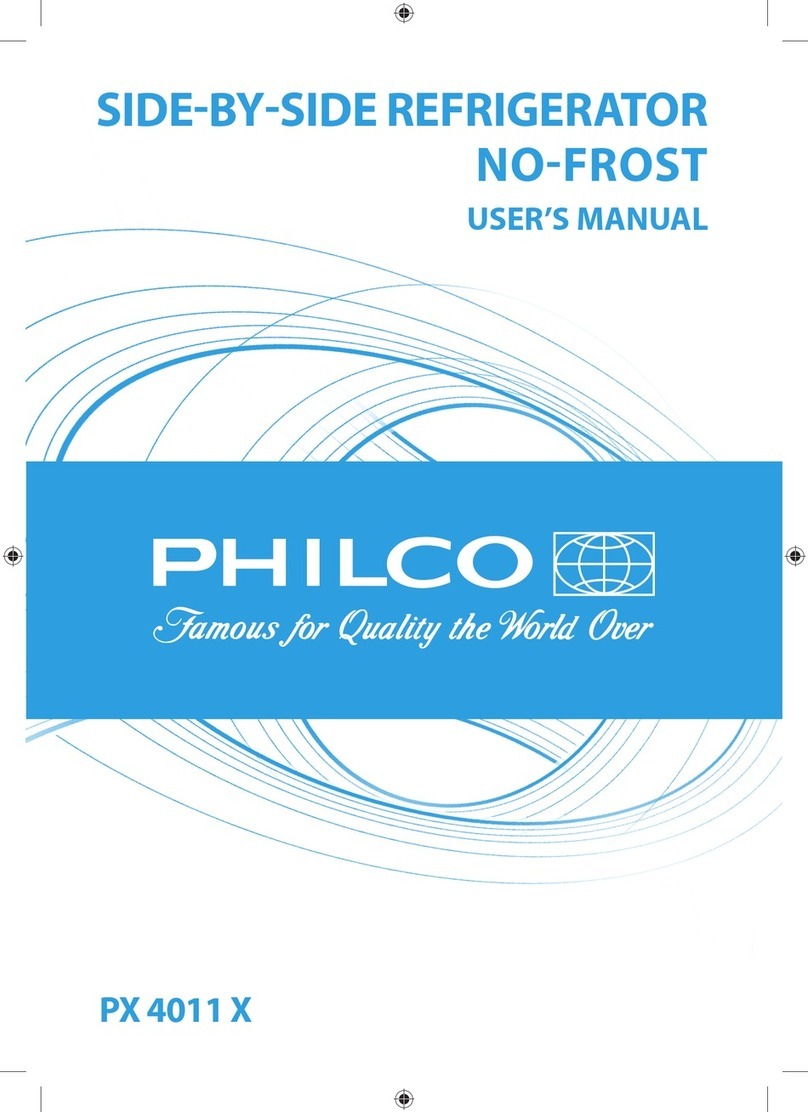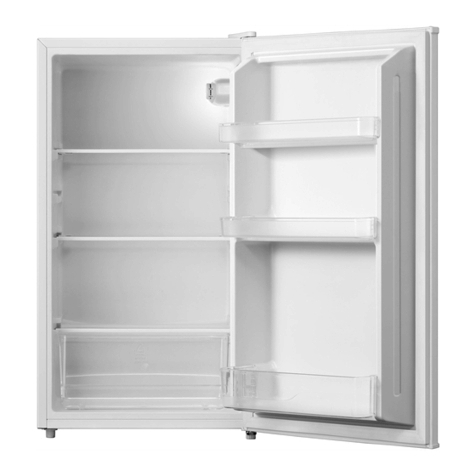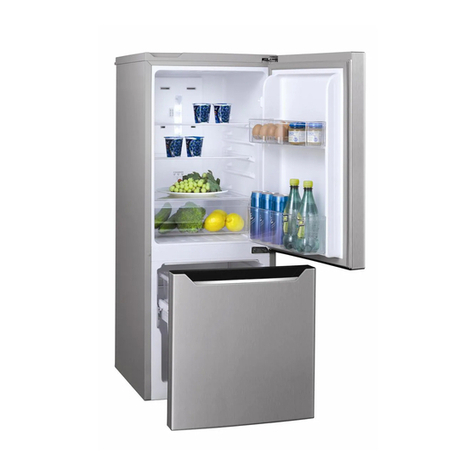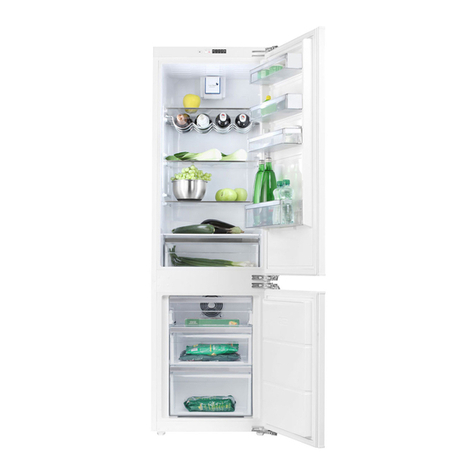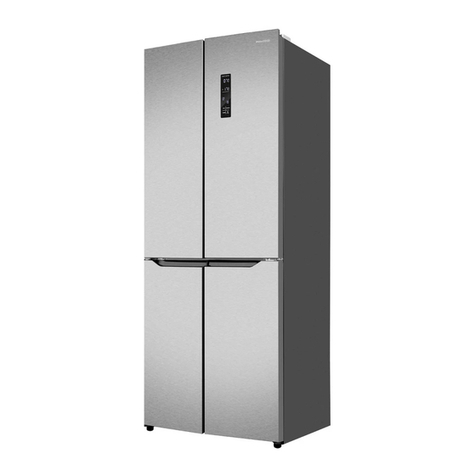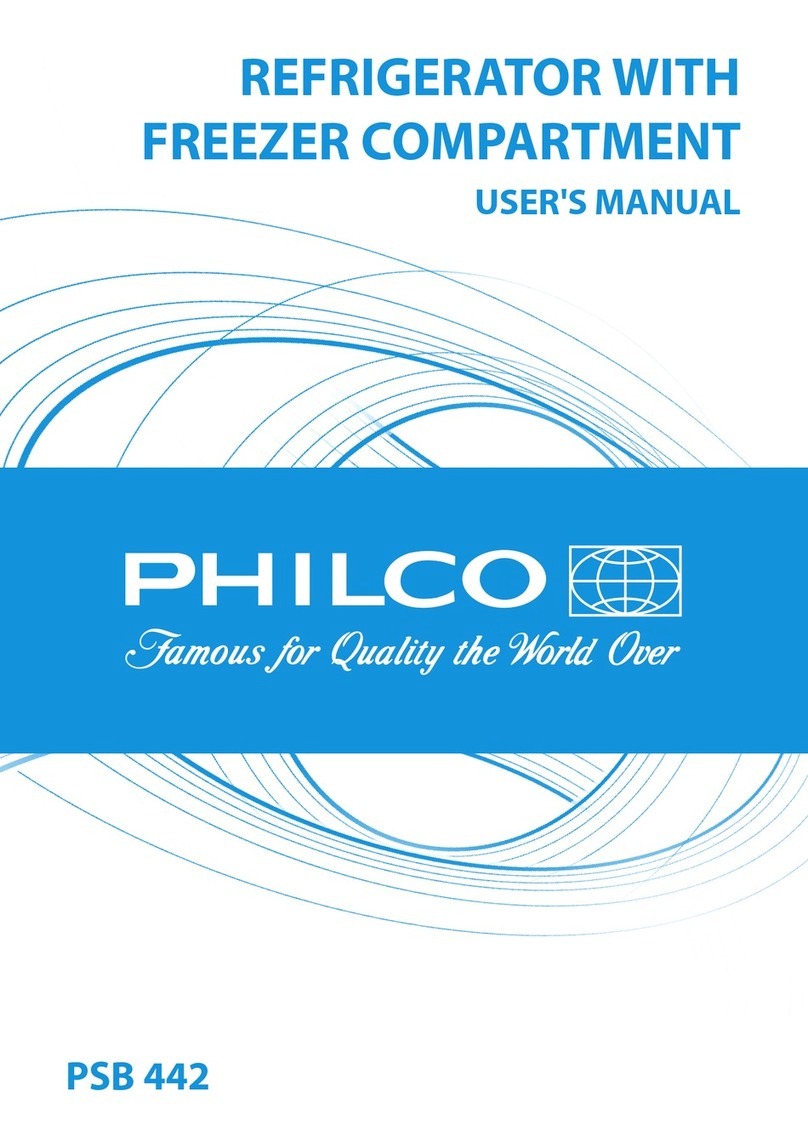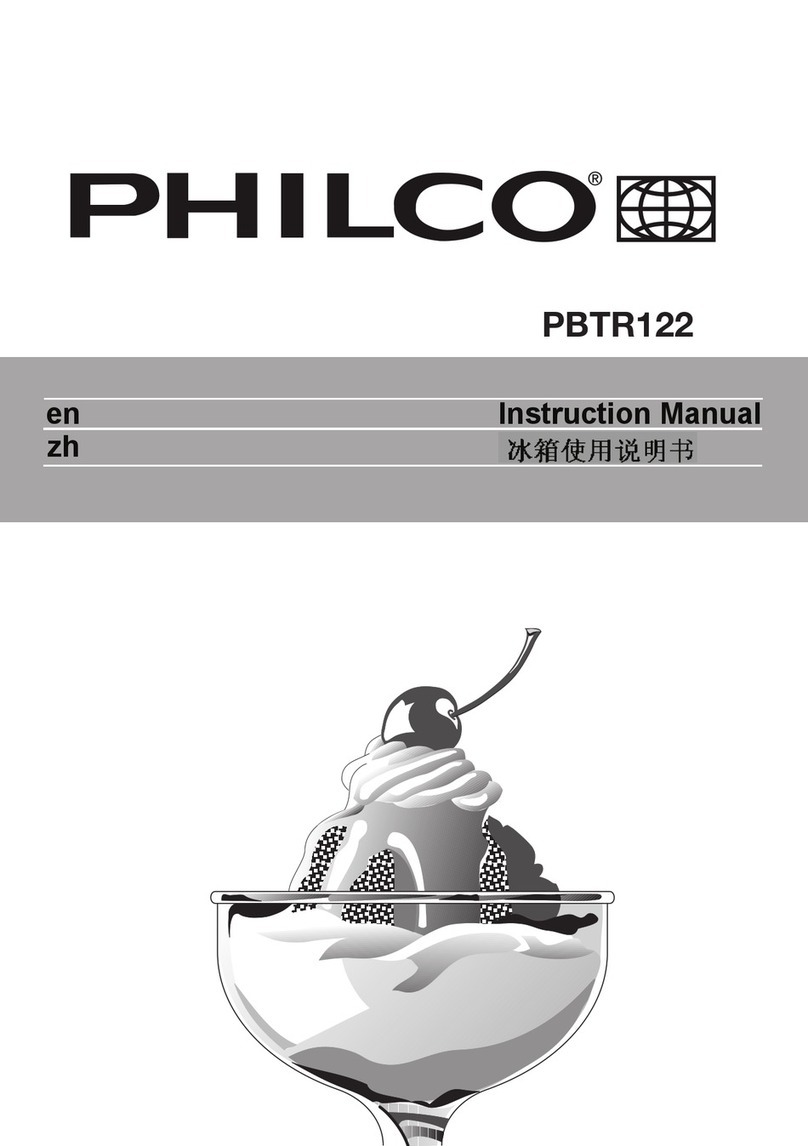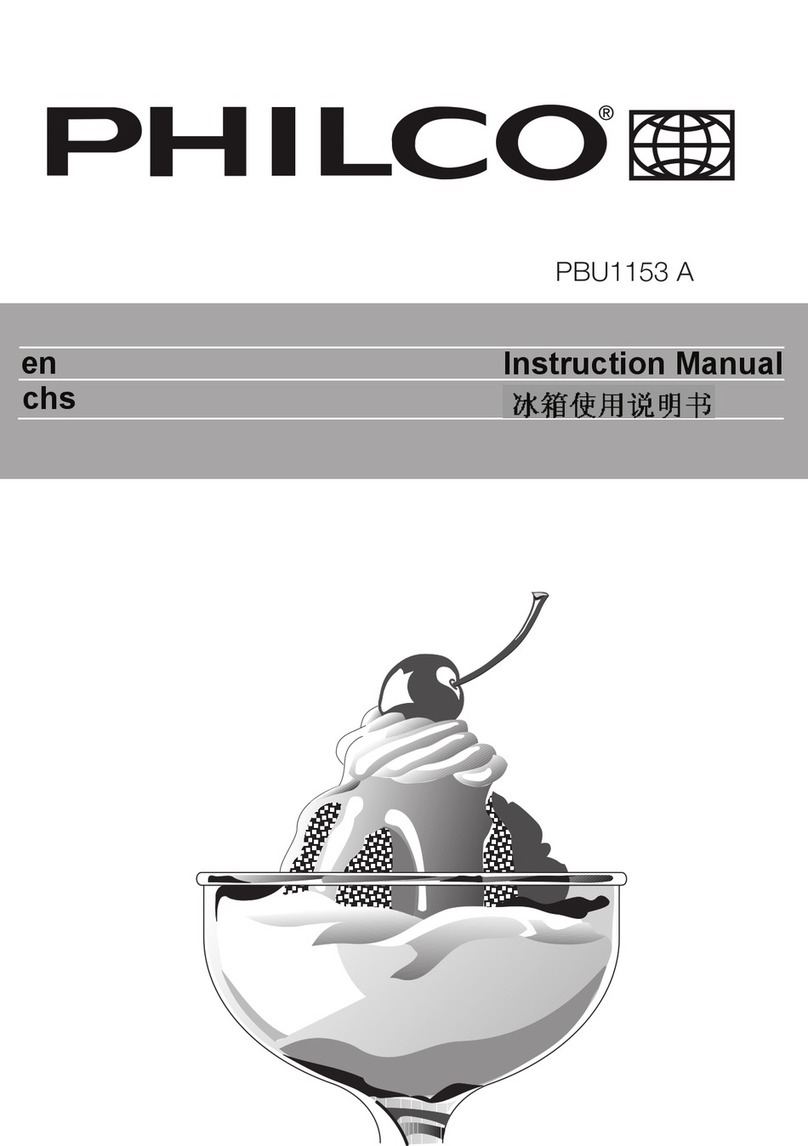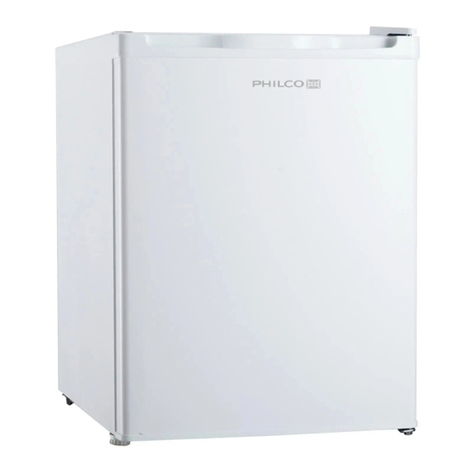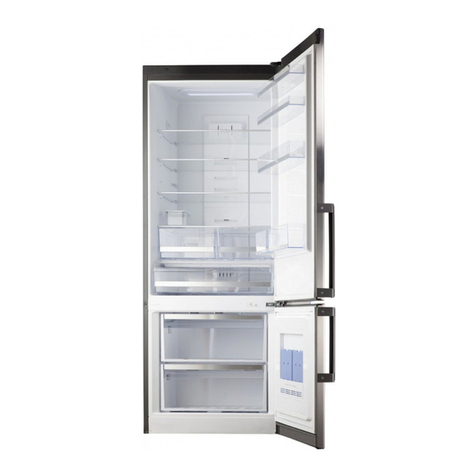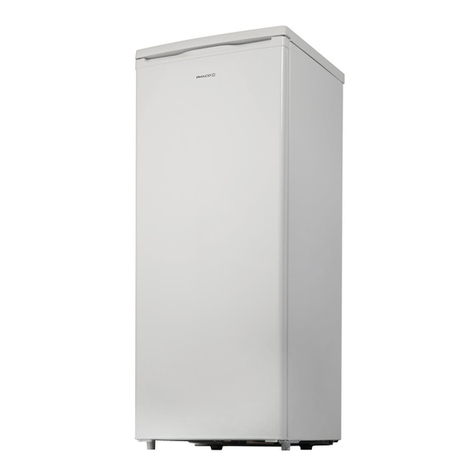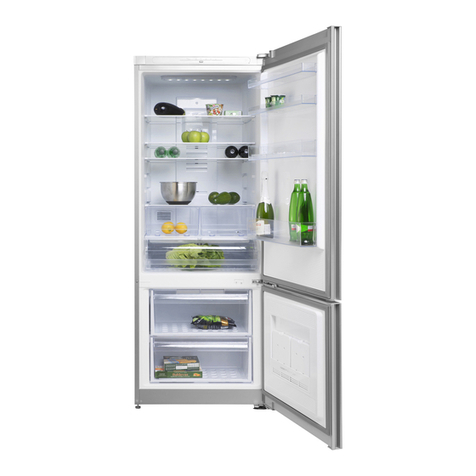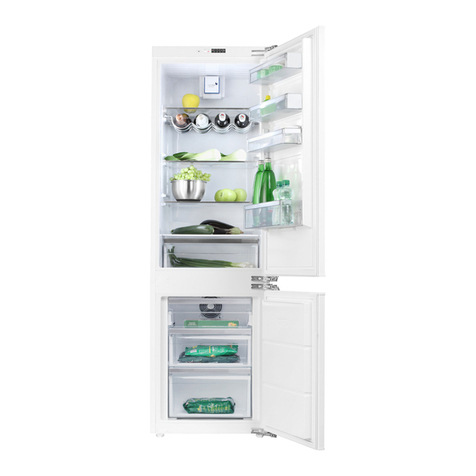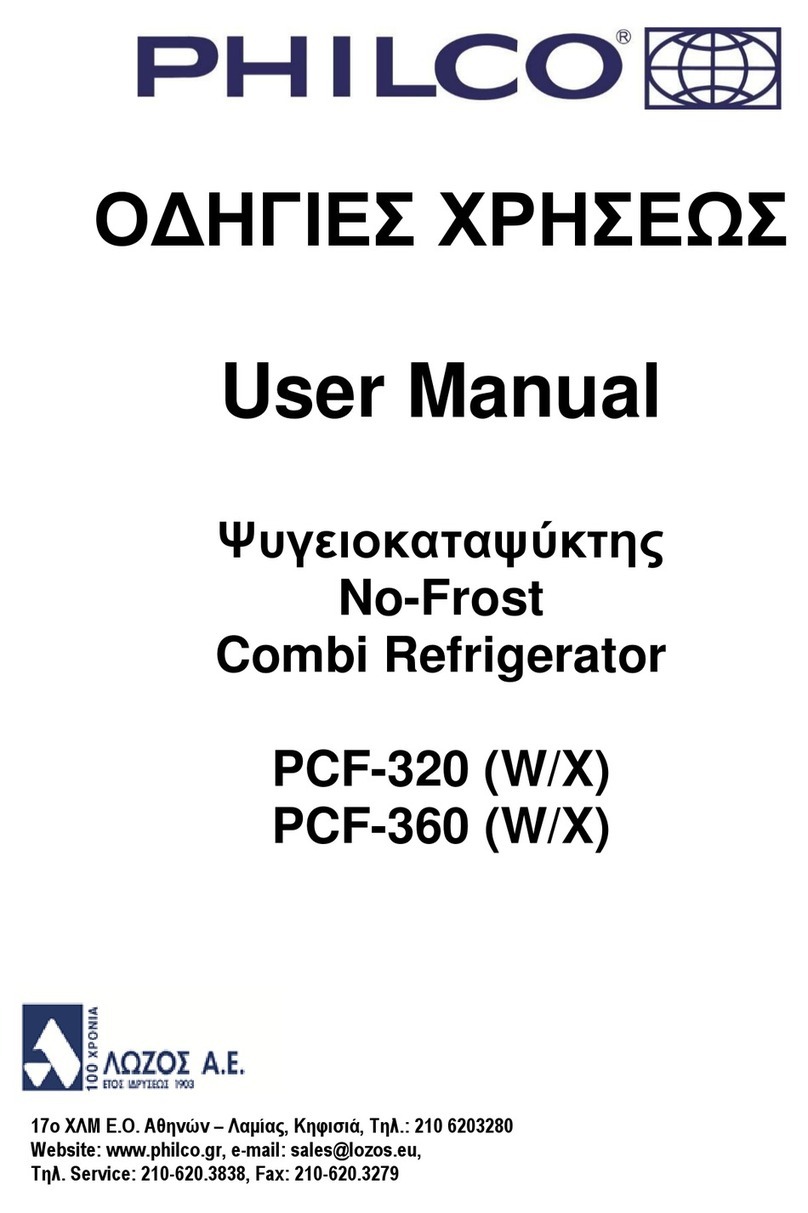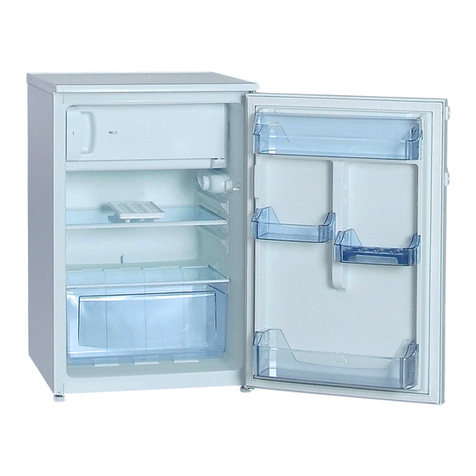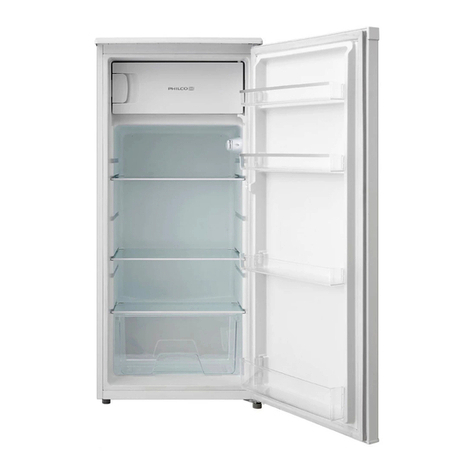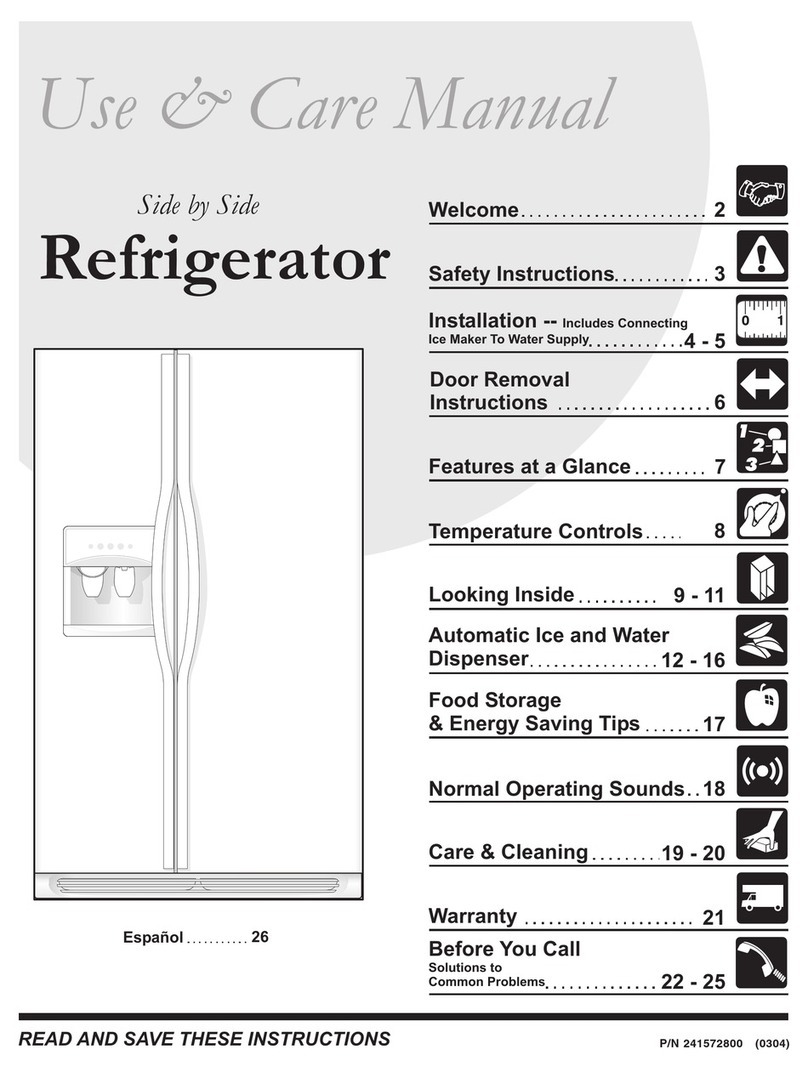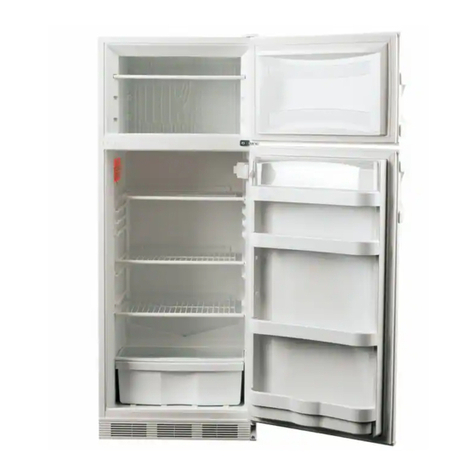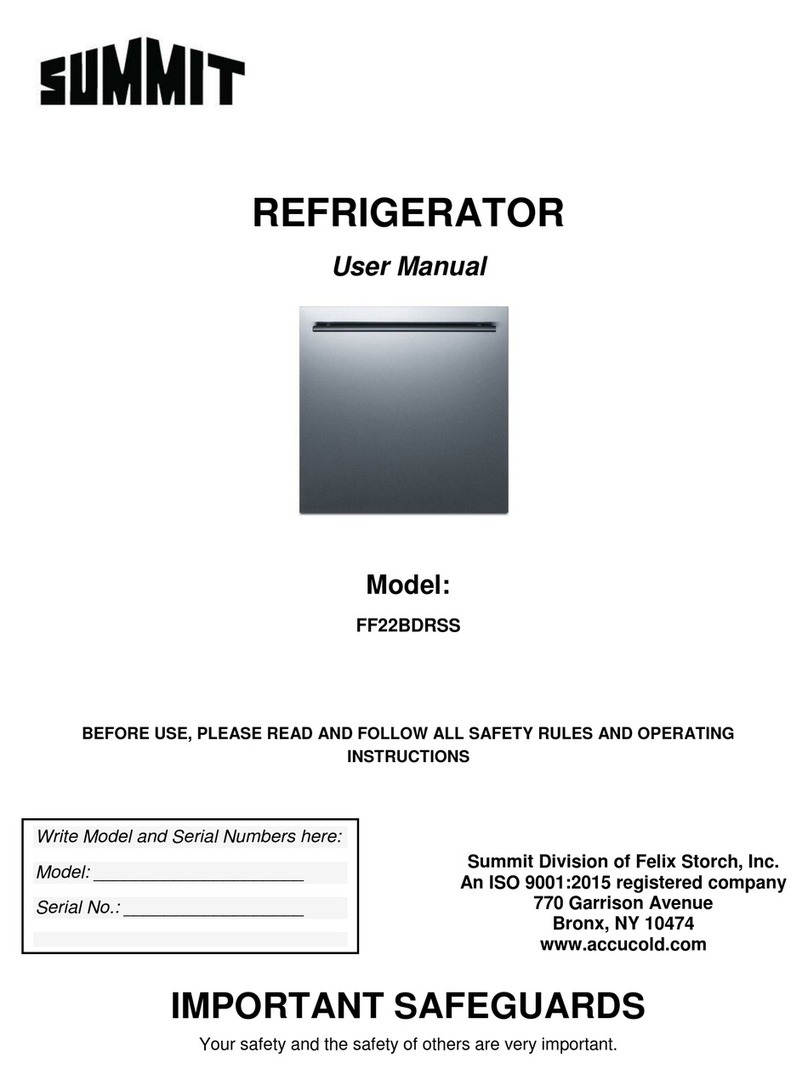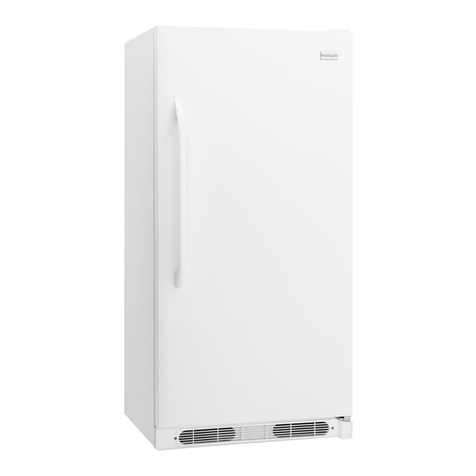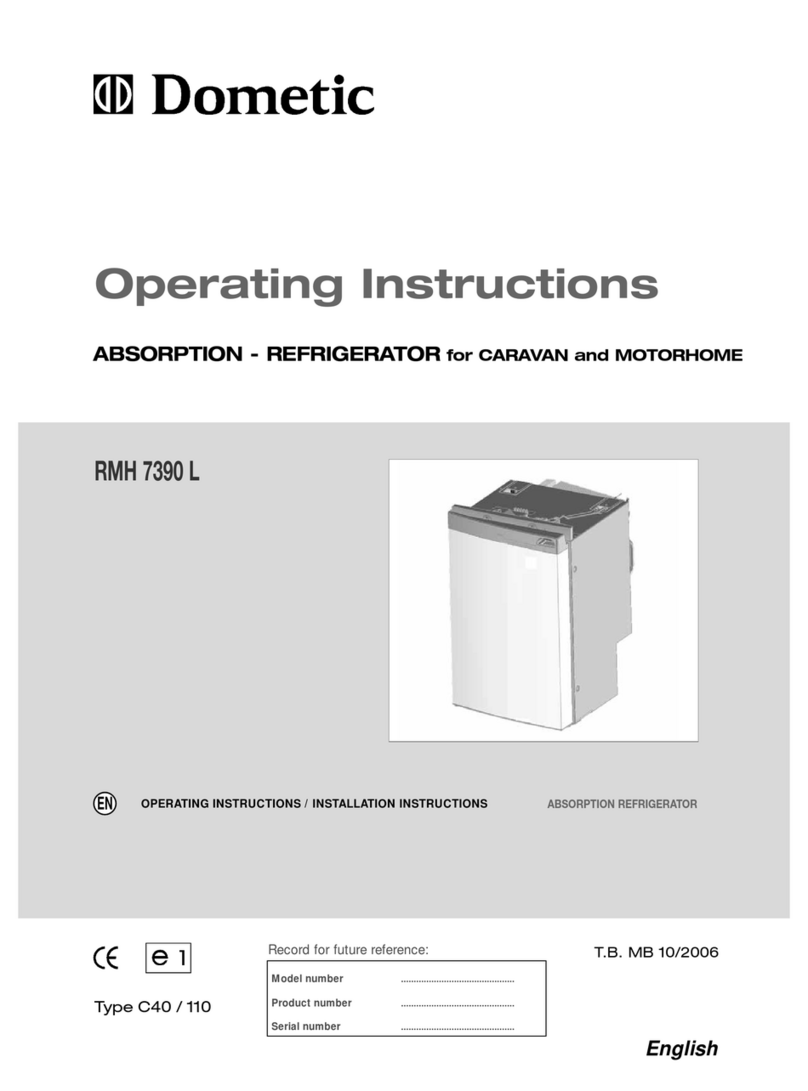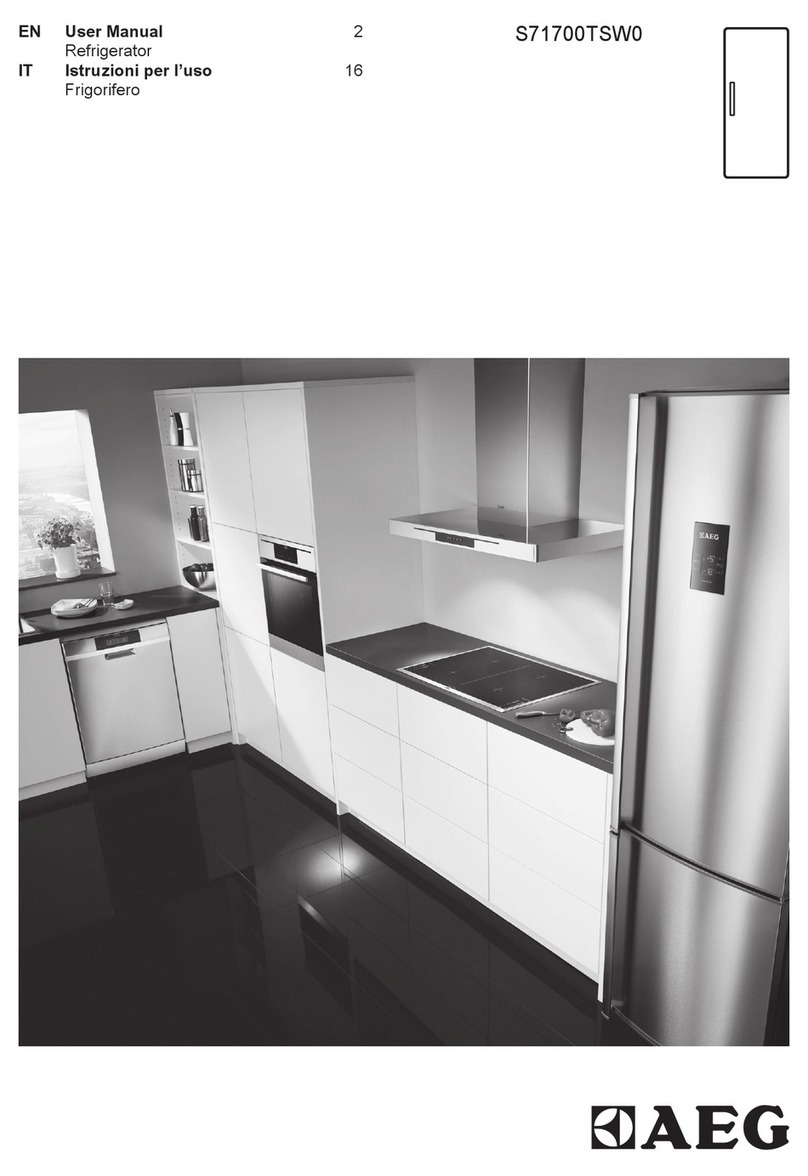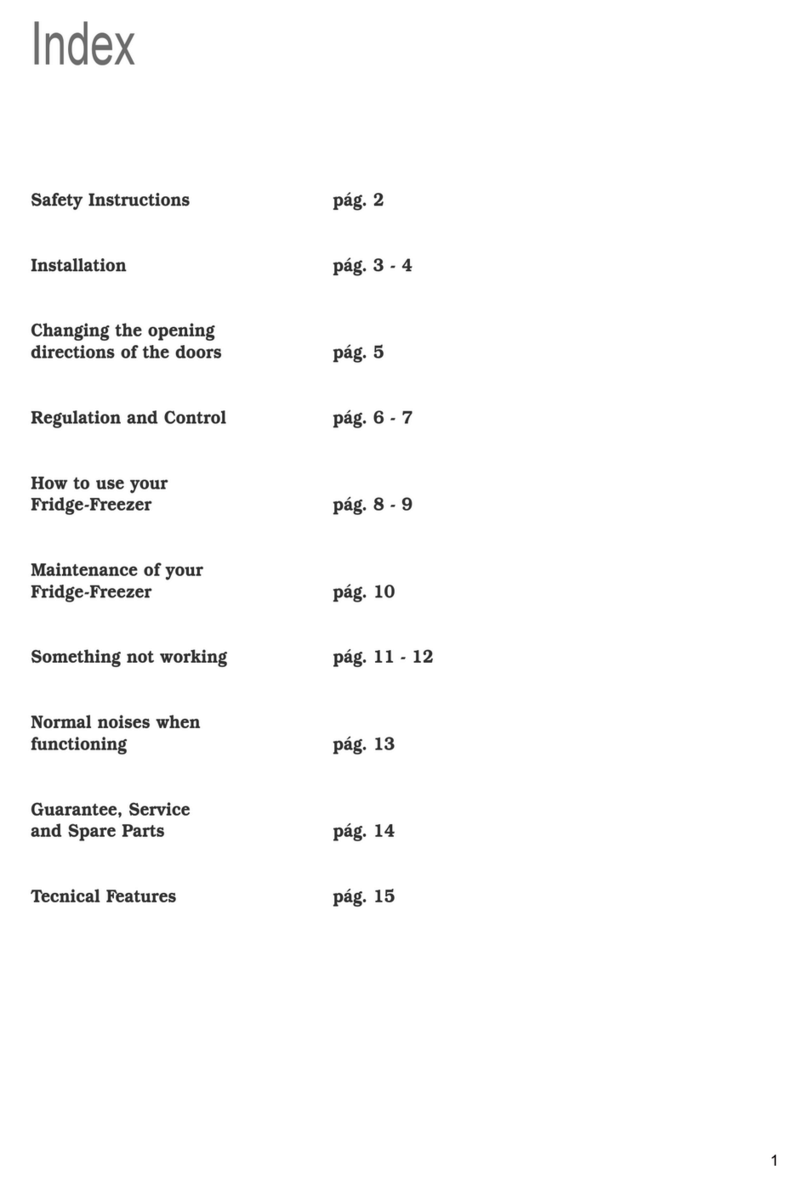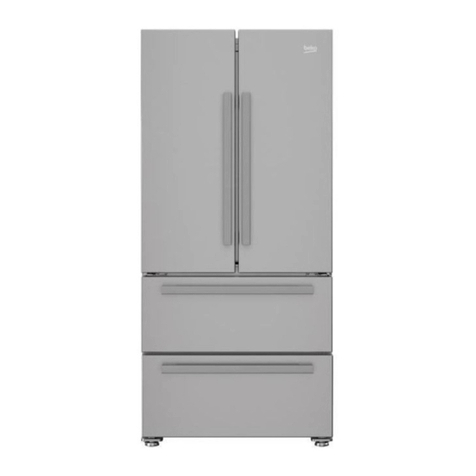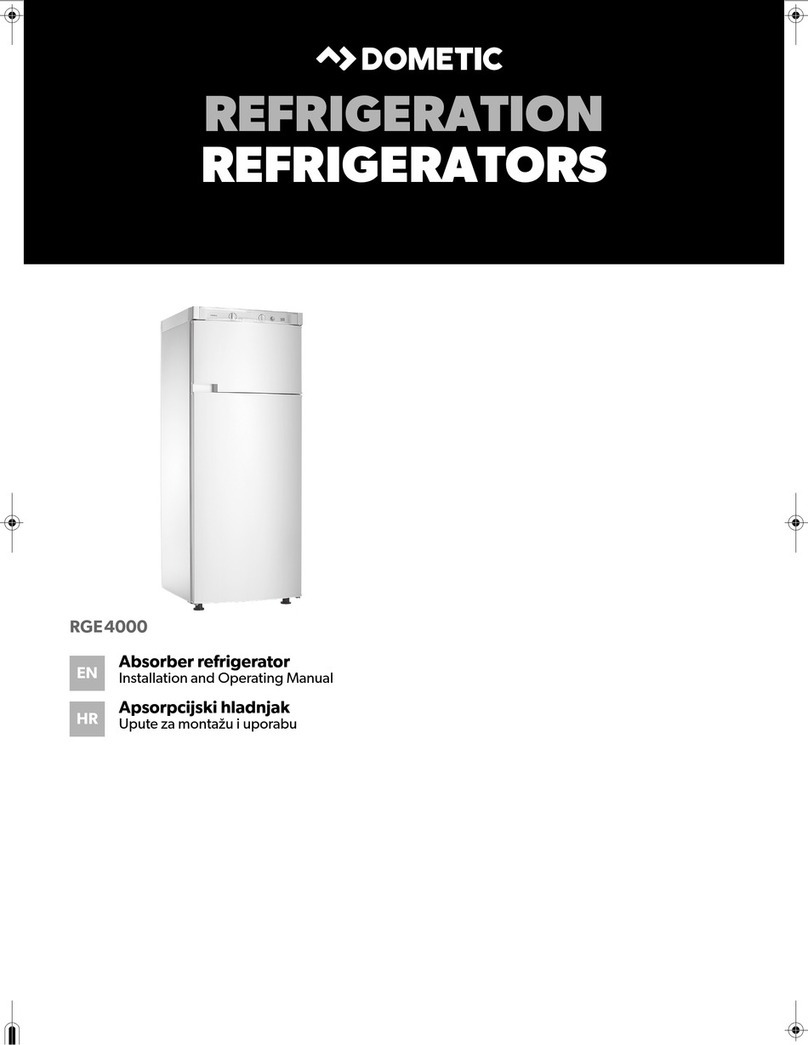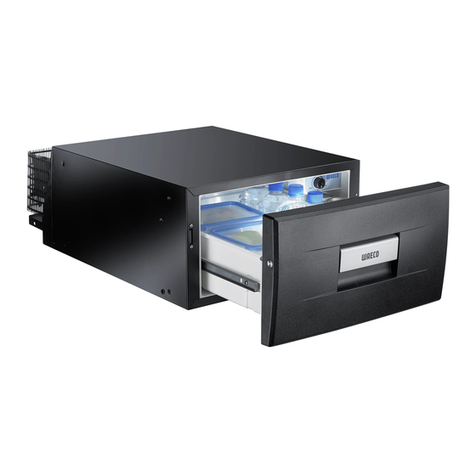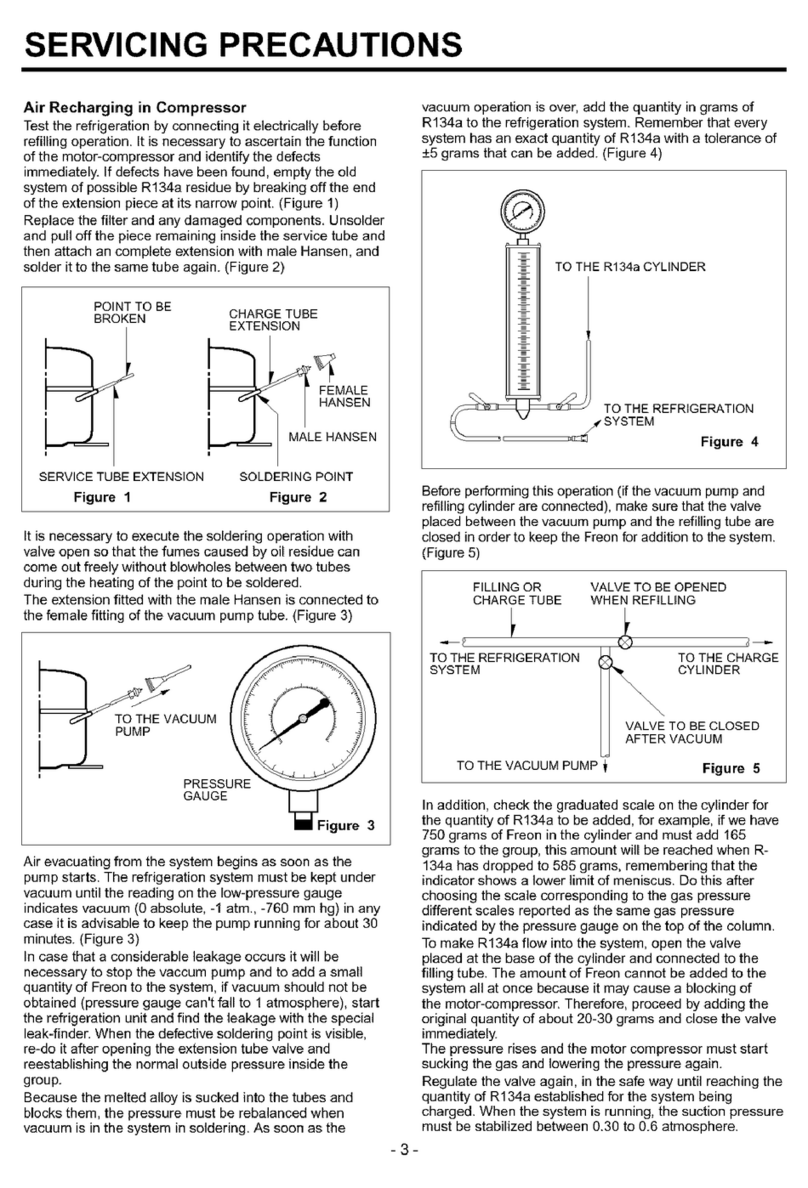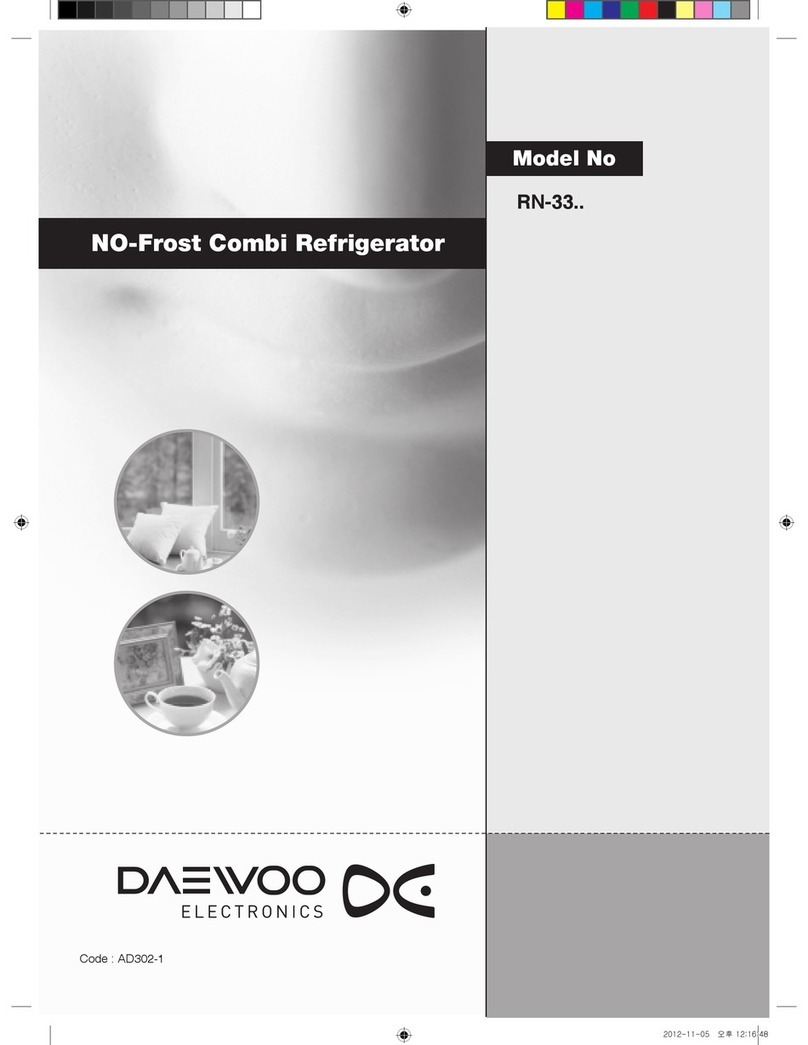
EN - 3
12/2013Copyright © 2013, Fast ČR, a. s.
Do not place food inside the refrigerator containing ammable propulsion gases (e.g. sprays) and no
explosives, contaminants or volatile substances. There is a danger of explosion!
Do not store liquids inside bottles and cans (especially beverages containing carbon dioxide) inside
the freezer compartment. The bottles and cans could crack!
• Store liquor only with a rmly tightened cap and in a vertical position.
• Do not use the base, drawers, doors of the appliance, etc. as a step or as a support. There is a danger
of injury to persons or damage to the appliance.
• Ensure that the plastic parts of the appliance and the door gasket seals are not covered with oil or grease.
The plastic parts and the gasket seals would then become porous.
• Do not consume frozen food immediately after taking it out of the freezer compartment. There is a danger
of frost bite!
Avoid prolonged hand contact with frozen food, ice or evaporating pipes. There is a danger of frost
bite and freezing to these objects!
We do not recommend placing hot liquids or food inside the refrigerator and lling containers all the
way to the rim.
Do not put fragile, heavy or unstable objects on the refrigerator.
Children in the household
• Never leave packaging and its parts with the children. There is a danger of poisoning or suocation by the
cardboard boxes and plastic sheets!
• This appliance is in no way a toy for children!
• For appliances with door locks: do not leave keys within the reach of children!
• If you will no longer be using the refrigerator, remove the doors, gasket seals and store it in a safe place.
In this way you will prevent the danger of children becoming trapped inside the freezer.
Maintenance and cleaning
Before you begin with regular or exceptional maintenance, disconnect the appliance's power cord or
disengage the fuse or circuit breaker. Never pull the electric power cord, only pull on the power plug.
Do not use mechanical or any other devices, except for devices recommended by the manufacturer
for the purpose of accelerating the defrosting process.
• Do not defrost or clean the appliance using a steam cleaning device! The steam may come into contact
with the electric components inside the appliance, where a short circuit could occur. There is a danger
of electric shock!
• Do not remove the frozen ice layer and frozen on food using a knife or a sharp object. This could damage
the cooling medium pipes. The escape of the cooling medium may cause eye injuries or may catch on re.
General instructions
• This appliance must not be used by persons (including children) with physical, sensory or psychological
impairments or by inexperienced persons, unless properly trained or schooled in the safe use of the
appliance, or unless they have been properly supervised by a person who will be responsible for their
safety. Children should be supervised so as not to play with the appliance.
• This appliance has been tested in accordance with the directives in force in the European Union.
• The tightness of the cooling circuit has been veried.
• This appliance conforms to the relevant safety provisions for electrical appliances in force in the European
Union.
